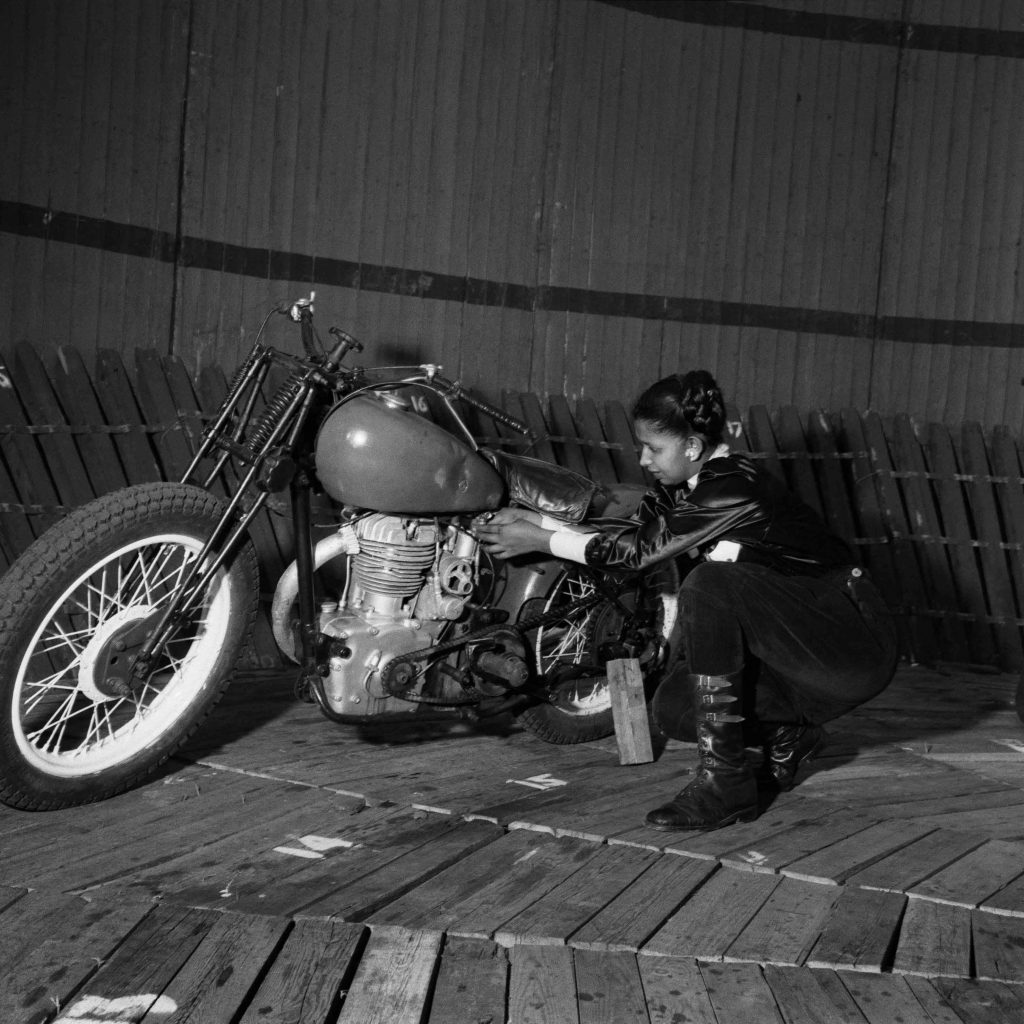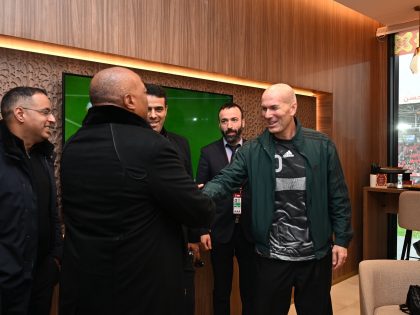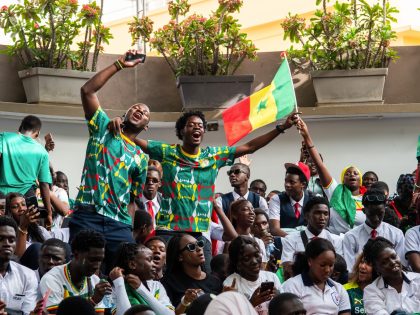The great opus of “Small Bobby”
Ranjith Kally (1925-2017), a legendary photographer, documented South African Indian life in famed magazine Drum.

Miriam Makeba with Sonny Pillay's family. Image: Ranjith Kally, 1959.
In the 1950s and 1960s, the South African magazine Drum gained an international reputation for innovatively revealing black urban life as told, in the main, by black writers and photographers. Ranjith Kally’s pictures and stories of the people of Durban, a city on South Africa’s east coast, were part of those circulated nationally, on the continent and beyond. Nigerian curator Okwui Enwezor wrote on the reach of Drum in his exhibition catalogue In/Sight: African Photographers, 1940 to the Present: “Bailey expanded the parameters of Drum so that it became a quasi-continental organ. Added in succession were editions in Nigeria (1953), Ghana (1954), East Africa (1957), and Central Africa (1966)… At the height of its popularity, Drum enjoyed enormous readership. Even a North American and West Indian edition was distributed. The magazine’s circulation per issue stood at 450,000 copies, reaching far into many literate, cosmopolitan areas of Africa.”
Ranjith Kally passed away on June 6. At the time of his death, Kally was based in Durban with his daughter Pavitra Pillay. He died while visiting his other daughter Jyoti Michael in Johannesburg. He was 91 years old. Born in Isipingo in 1925, Kally – a descendant of indentured labourers on the Natal sugarcane farms – left school at the age of fourteen to work at the R. Faulks & Company shoe factory in Durban’s Gale Street to supplement his family’s income. When he was 21, Kally discovered a small Kodak Postcard camera in a jumble sale, which he bought for sixpence. He soon became consumed by his newly found interest and spent almost all his free time photographing social events on weekends for The Leader newspaper Panorama reported in 1996. He told the journalist Nirode Bramdaw in that interview:
I remember doing my first enlargement in a makeshift darkroom in Plowright Lane, not far from The Leader offices in Pine Street, Durban. We got under way at 8pm and at 4am we were cursing as the sun began rising, jeopardising our print. In the early days we had to envisage a whole host of diverse criteria before pressing the shutter. But modern photography has taken the sting out of photography…

Kally joined Golden City Post and Drum magazine, where he worked from 1956-1965 and again from 1968-1985, some 26 years at the famed sister publications. It was during these years that he produced some of his best pictures, working alongside the Drum bureau chief for Durban and fellow photographer, G.R. Naidoo. He recalled the atmosphere at the Durban office to me one day:
There was Bobby Haripersadh, Ismail ‘I.A.’ Khan, George Mahabeer, Duke Ngcobo and Dolly Hassim. The stories and pictures were often used for both Golden City Post and Drum. G.R. initially did all of the photographs for the stories. When I came in we shared the photographic work and I sometimes accompanied him on stories and took the pictures. It was a very cordial atmosphere.
Two of Kally’s photographs from that period were included in Enwezor’s 1996 landmark exhibition at the Guggenheim Museum in New York. The images from 1957 challenge the racial stereotypes of the Apartheid era. One depicts two older white men drinking in a shebeen in Cato Manor – a predominantly lower working class African and Indian area at that time. The other captures former motorcycle rider Tommy Chetty and his stunt partner, Amaranee Naidoo, riding the “Wall of Death”. Described in the caption as “a shy and attractive young girl who was at one time too nervous to ride a bicycle, [Naidoo] has won fame throughout Natal, South Africa, by her daring escapades on the Wall of Death. And while other girls of her age are wondering who their next ‘date’ will be, she often wonders if she will be alive for another date.”

Kally’s assignments saw him photograph political leaders like Monty Naicker, Yusuf Dadoo and Nelson Mandela at the Rivonia Treason Trial; Goonam Naidoo on resistance politics and women’s rights; Oliver Tambo at the funeral in Lesotho in 1982 when ANC members were massacred by the South African Defence Force; Alan Paton and Sushila Gandhi in a quiet moment together at Phoenix Settlement (built by Mahatma Gandhi); and ANC leader Chief Albert Luthuli under house arrest and receiving news on winning the Nobel Peace Prize in 1960. He photographed Durban’s rival gangs – the Crimson League and the Salots – and the court case surrounding local gangster Michael John’s brutal death at his home, which captured the imagination of a generation. He often told the story of how he smuggled a camera into court under his shirt – for that tricky mission – and illicitly took pictures by clicking a pen at the same time as he snapped the photos, without anyone being any the wiser. He pictured hundreds of football matches at Curries Fountain stadium and took like a fish to water to the pin-up girl assignments. His coverage of the jazz and music scene at the Goodwill Lounge jazz club in the 1950s and 1960s – owned by Pumpy Naidoo and his brother Nammy – added a lens of glamour during those difficult times and featured the likes of local singers Miriam Makeba and Sonny Pillay and international acts such as Tony Scott and Jazz West Coast. In 2004, whilst preparing for his first solo exhibition entitled Ranjith Kally: 60 Years in Black and White at the Goodman Gallery in Johannesburg, the then 78-year-old Kally reflected to me:
Of all the people I’ve photographed, Chief Luthuli has been the highlight of my career. He was such a jovial, humble person and would pose in any way that you asked of him. While Luthuli was under house arrest, the special branch would watch the front of the house and we would sneak in through the back. At the time I worked with Bobby Haripersadh and Mrs Luthuli would refer to me as ‘Small Bobby’. We had a great relationship with him [Luthuli].

Renowned South African photographer David Goldblatt was at the exhibition opening and said that he was ashamed that he hadn’t heard of Kally until then. “I thought I knew most photographers in the country working in that period… I found his work very warm and a breath of fresh air that, over this long period, has retained particular senses and values,” Goldblatt remarked to journalist Penny Sukhraj at the time. “The picture of Chief Luthuli is a very personal response. It is a very appealing picture of a great man,” added Goldblatt, who bought a print of Kally’s portrait of Albert Luthuli standing at the shop window in Groutville. Many museums and public collections such as the Johannesburg Art Gallery, the Durban Art Gallery, the South African National Gallery, the Durban Local History Museum, SABC, among others, added Kally’s opus to their collections from that exhibition.
Prior to that however, Kally was on the margins in Durban, “while others were making the front page,” reported Sukhraj, who likened Kally to the fifth Beatle. The tributes on Drum from the late 1980s – international exhibitions, catalogues, theatre plays, books and PhD research topics – focused on the Johannesburg office and the stories from Sophiatown.
Kally was taken aback by the flood of media attention he received in 2004 and pleasantly surprised by the prices bestowed on his work by the art world. He charmed all and sundry with his humble demeanor and lucid accounts of his experiences and finally graced a number of national front pages too.

In using the example of Malek Alloula’s Le Harem Colonial, a study of early 20th-century postcards and photographs of Algerian harem women, Edward Said explains that Alloula “sees his own fragmented history in the pictures” and in revisiting the images “we have the recovery of a history hitherto either misrepresented or rendered invisible. Stereotypes of the Other have always been connected to political actualities of one sort or another, just as the truth of lived communal (or personal) experience has often been totally sublimated in official narratives, institutions and ideologies.” Kally’s photos contribute to the “restoration of the lived historical memory” and the “unofficial” stories of “experiences of the Other” – they are as much about a collective memory of a community as they are about his exceptional ability.
I was working at the Durban Art Gallery in 1998 when I first met Kally, who approached me to assist in getting his photographs exhibited. It was a few years later that I curated Kally’s first solo exhibition which took place at the Goodman Gallery in Johannesburg (2004) and a retrospective exhibition at the Durban Art Gallery later that year, an edited version of which travelled to the Bamako Encounters photo biennale in Mali (2005), where Kally received a Liftetime Achievement Award. The exhibition also traveled to the Kunsthalle Wien in Austria (2006), the Centre de Cultura Contemporània de Barcelona in Spain (2006), and Espace Jeumon (Cité des Arts) in Reunion Island, France (2007).
Kally’s work has been included in some local and international group exhibitions and related catalogues such as The Finest Photos in Old Drum (1987), Sof’town Blues (1994), Margins to Mainstream: Lost South African Photographers (1994) and more recently The Indian in DRUM magazine in the 1950s (2008), among other. Linda Givon – the founder of the Goodman Gallery, who took the decision to show Kally’s photos there – was quoted by the Sunday Times Lifestyle in 2004, “His work is historically extraordinary, because we think we know about the past but then realise we have never really been exposed to this community that has been living in Durban for so many decades…”

His images are an invaluable archive of the social history of the South African Indian community from 1948-1994 and were used extensively in books such as Portrait of Indian South Africans (1969) by Fatima Meer – focusing on the market gardeners and the “Tin Town” community that lived in wood-and-iron shacks in Springfield Flats – and From Canefields to Freedom: A Documentary on Indian South African Life (2000) by Uma Duphelia-Mesthrie. He published The Struggle, 60 Years in Focus: Ranjith Kally (2004) and a recent survey of his work published by Quiver Tree Publications is entitled Memory Against Forgetting (2014).
In 1952 Kally came third out of 150,000 entries in an international photo competition held in Japan and in 1967 he was selected for membership to the Royal Photographic Society in London. Kally was awarded an honorary doctorate from the University of KwaZulu-Natal in 2013 and earned the Living Legends title awarded by the eThekwini Municipality (City of Durban) the same year.
Reflecting on his career in 2004, Kally said that he had “no regrets and no grudges. Apartheid was tough on me like most black people. As far as photography is concerned, there is no other profession in the world like it. I tried capturing emotion in my pictures and I have been successful some of the time. But I will take pictures all of the time.”




















